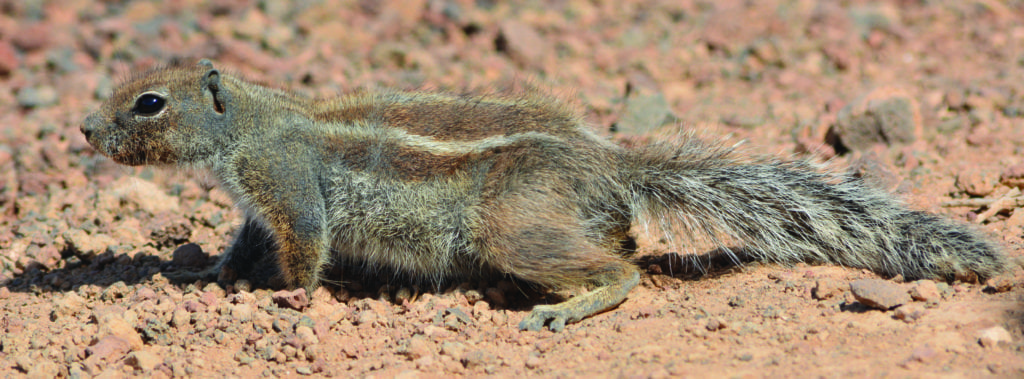California Ground Squirrels (April 11)


When an adult California ground squirrel discovers a rattlesnake lurking nearby, it often harasses it. In this area, baby ground squirrels make up 69% of the rattlesnakes’ diet. Therefore, the adult ground squirrel harasses the rattlesnake by dashing around it, nipping at its tail, kicking sand on it and waving his tail at it. The rattlesnake is not as fast or agile as the ground squirrel. If bitten, the ground squirrel doesn’t die because adult squirrels have proteins in their blood to neutralize the rattlesnake venom. Baby California ground squirrels, however, have not yet developed enough proteins to neutralize the poison.
The ground squirrel will even taunt the rattlesnake by shunting extra blood to its tail, so it will heat up. Rattlesnakes can see heat (infra-red) and, therefore, lunges for the extra hot tail. Eventually the rattlesnake becomes frustrated and retreats. Interestingly, ground squirrels also harass gopher snakes – 50% of the gopher snakes’ diet also is baby ground squirrels. Gopher snakes, however, do not see heat, so the ground squirrel does not shunt extra blood to its tail when fighting with this kind of snake. How does a ground squirrel know that a rattlesnake can see heat and a gopher snake cannot? God knew the California ground squirrel would need this for its offspring’s defense, so He designed it to discern the difference.
Psalm 104:24
Reference
Hot bother: ground squirrels taunt with infrared
Dancing infrared ground squirrels
